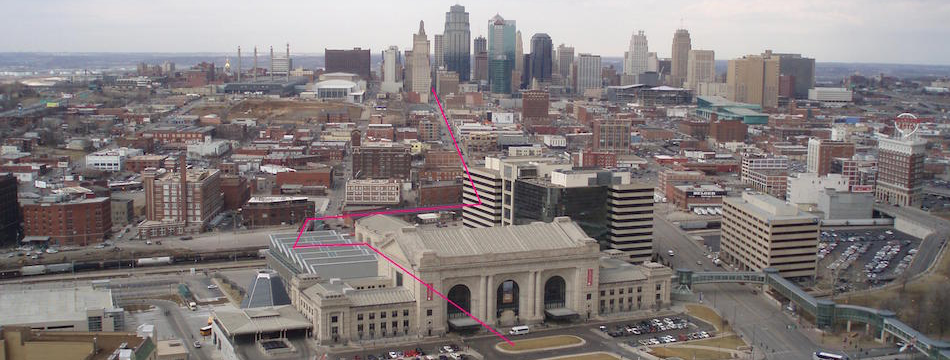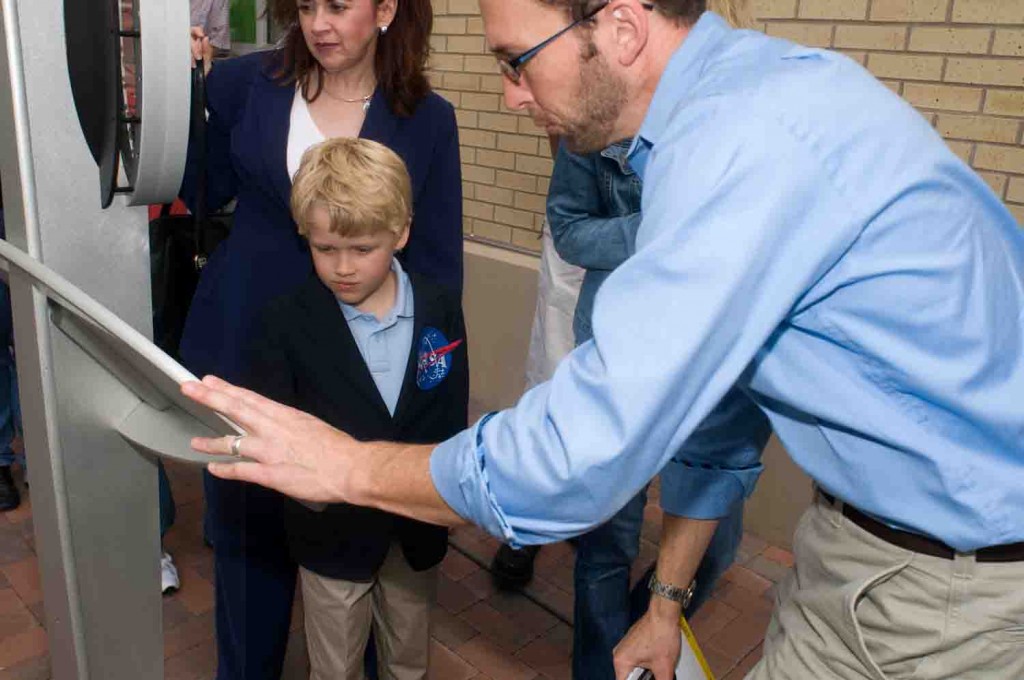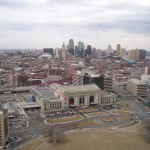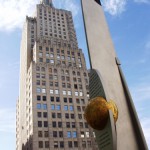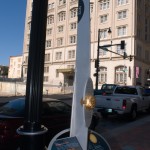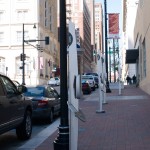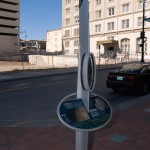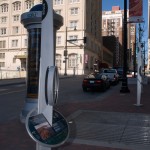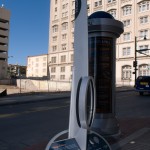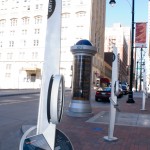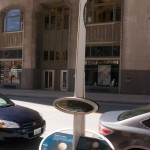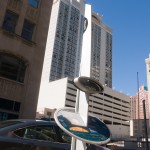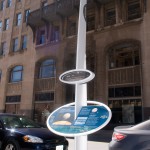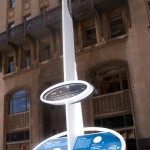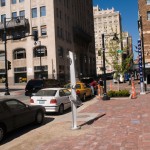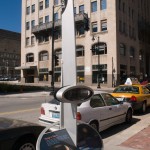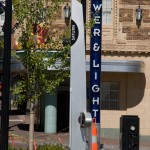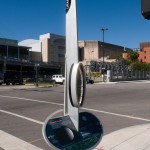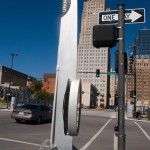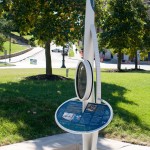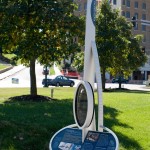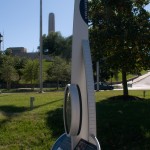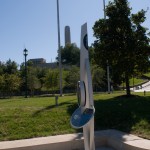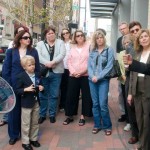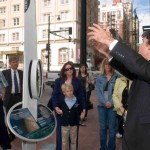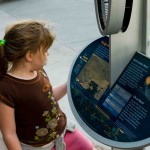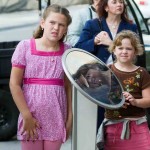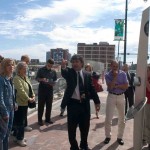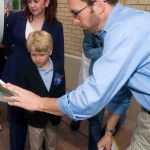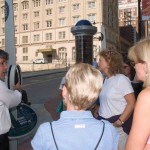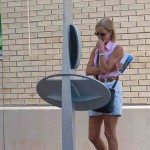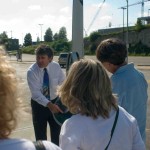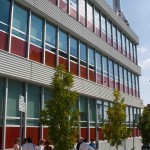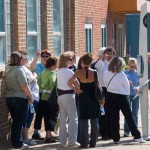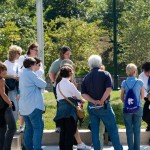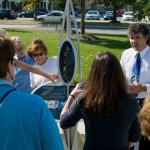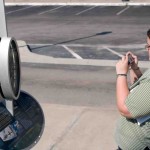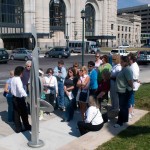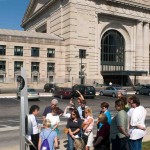To see a list and map of all Voyage Communities, visit the Community Network main page.
Opening Date: October 10, 2008
Exhibition Type: Mark I
Additional Custom Stanchions: Eris, Explorers
Lead Institutions: City of Kansas City, Ewing Marion Kauffman Foundation
Journey through the Universe opening programs–
- October 10: Public Tour of Exhibit
- October 10: Public Presentation: A Voyage that Will Forever Change Your Perspective of Home
- October 11: 1-Day Voyage Educator Professional Development Workshop
Overview
The Voyage exhibition was permanently installed in Kansas City, Missouri, on October 10, 2008. The exhibition is located along Baltimore Avenue, with the Sun and inner Solar System at 13th and Baltimore near the Power & Light Building. The exhibition follows a 1-mile path, running south through the Crossroads District, and ending in front of historic Union Station. The path is shown in the photograph above, and on the site map below. Voyage was provided as a gift to Kansas City by the Ewing Marion Kauffman Foundation. Voyage in Kansas City is unique in that the Kauffman Foundation wanted to extend the experience to Union Station, which more than doubled the standard path length from the Sun to Pluto. To achieve this, two new stanchions were commissioned.
The first commissioned stanchion was located at the average distance from the Sun for the dwarf planet Eris. Eris was discovered in 2005, and initial size estimates indicated it was larger than Pluto. This set off the great Pluto debate anew, and resulted in Pluto being formally reclassified as a dwarf planet by the International Astronomical Union in 2006.
The second commissioned stanchion located outside of Union Station, is called the Explorers stanchion and is dedicated to human exploration of the Solar System. Its design (see photo gallery below) included spectacular 3D laser-sculpted crystal scenes commissioned for Voyage in Kansas City – the Hubble Space Telescope above Earth, the Curiosity Rover on Mars, the Gemini Telescope on Mauna Kea, the Voyager 2 spacecraft flyby of Neptune in 1989, and the Apollo 11 Lunar Module Eagle on the Moon in 1969—a set of specific scenes chosen to reflect both human and robotic exploration of the Solar System and beyond. It is the same technique used to create and portray the exhibition’s model planets and moons (see the Voyage’s Accuracy page).
It is noteworthy that as the design team was assessing what might be placed in front of Union Station, a novel idea came to mind. The Voyager I spacecraft was the farthest human-made object from Each. It was launched on September 5, 1977, and flew by Jupiter and Saturn. The question posed – how far would the Voyager 1 spacecraft be from the Sun on exhibition opening day in Kansas City? It turned out to be just beyond Union Station. It was therefore fitting to place a stanchion dedicated to human exploration of the Solar System at that location. Looking at the site map below, it is pretty remarkable that the human race built and launched a robotic emissary that has traveled so far from Earth.
Site Map and Customized Tour Brochure
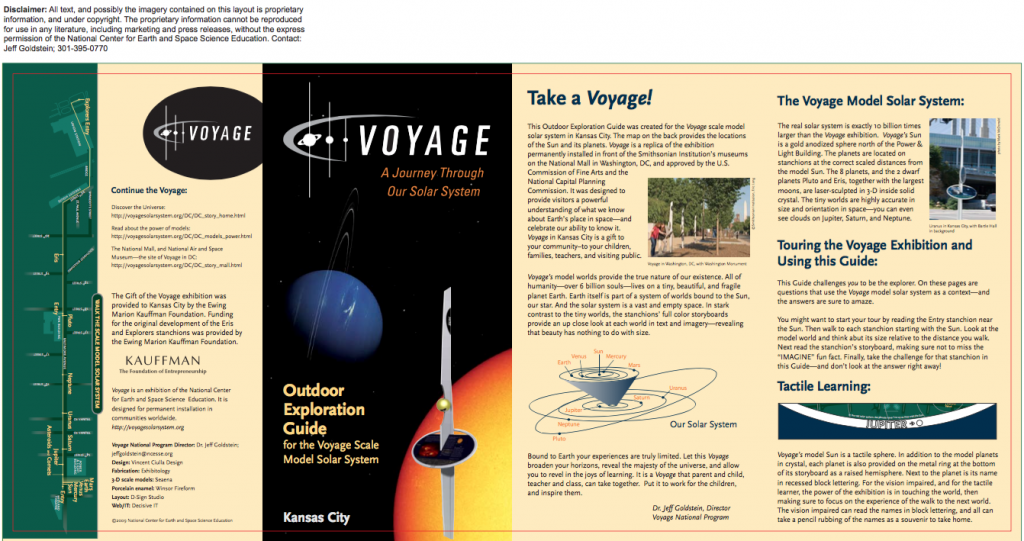
One side of the tour brochure for Kansas City, which includes a description of Voyage in Kansas City, a customized site map, and acknowledgement of local partners.
Gallery
Multimedia

